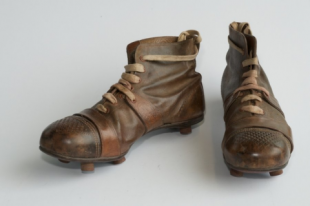Len Oliver’s look back at playing soccer in 1940s and 1950s Philadelphia, first published in 1992 for the Michigan Ethnic Heritage Studies Center ‘s Journal of Ethno-Development and originally entitled ”American Soccer Didn’t Start with Pele: Philadelphia Soccer in the 1940s and 1950s,” concludes.
Soccer in the 1940’s and 1950’s was basically a big-city sport, particularly in the ethnic enclaves, in direct contrast to the growth of the soccer phenomenon after Pele arrived in the mid-1970’s. This later growth period, triggered by the North American Soccer League’s success, the play of Pele, Beckenbauer, and Chinaglia, among others, had its greatest successes in America’s suburbs. By this time, many of the ethnic groups had abandoned the cities. Their kids, along with other suburban kids whose parents had never seen a game of soccer, became the basis for our recent soccer explosion of the last 20 year
The sole exception is the young Hispanic and Caribbean player living in the inner-city, often without a youth team, soccer shoes, or good soccer balls. These kids are on the urban, inner-city playgrounds going 1 v 1 like their counterparts from Kensington half a century ago. What they need is a Lighthouse Boys Club, fields to play on, and organized soccer when they are ready so they can make their mark on the game and enjoy it.
The future of soccer in America’s white, suburban areas and small towns, a recent phenomenon, seems assured. The game has attracted millions of youngsters and their parents new to soccer. It can only grow. But the future of soccer in America is also in America’s cities, with predominantly African-American youths untouched by soccer and Hispanic kids seeking outlets for their talents. Their future in the sport is more problematic.
Ironically, our nation’s inner cities, just as they were when we were playing on the streets of Kensington, are once again America’s future in soccer. We played because we saw something in the game we liked. As urban, low-income kids, we mastered a skill, we worked together on teams, we traveled to other cities, and we grew with the sport. We left the neighborhood, primarily because of the exposure from soccer to a larger world, but the neighborhood never left us. If we can instill this same spirit in today’s urban youth, our future as a soccer-playing nation holds great promise.
The final installment in our series of Q&A’s with Len Oliver will appear later this week.
Read more: Len Oliver’s article, part one, part two, part four, part five.
PSP’s Q&A with Len Oliver: part one, part two, part four, part five.


Comments